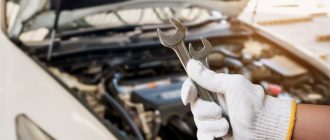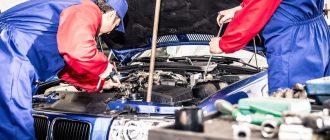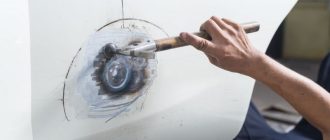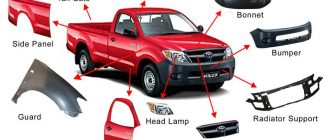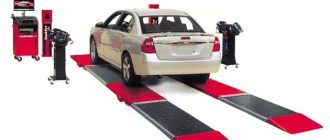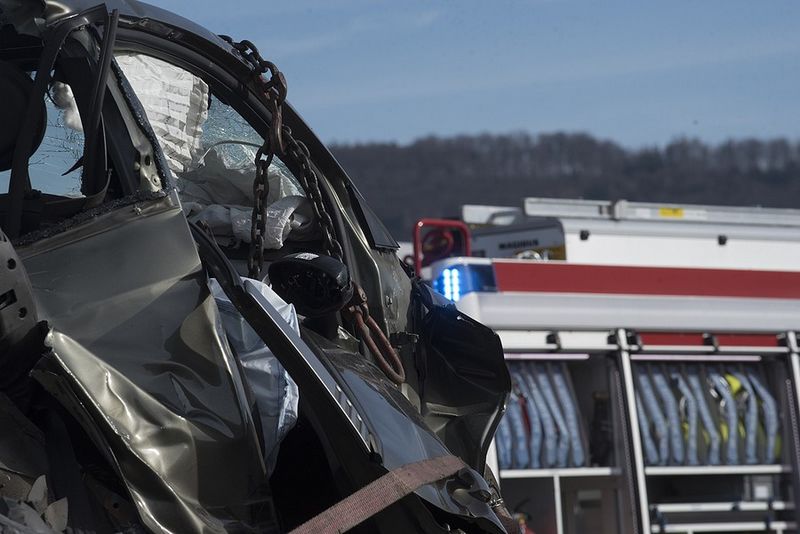
The Process of Repairing a Totaled Car
When a car is involved in a severe accident and sustains extensive damage, it may be deemed “totaled” by the insurance company. This means that the cost of repairing the car exceeds its actual value. However, just because a car is totaled doesn’t mean it’s completely useless. In fact, there is a process of repairing a totaled car that can potentially bring it back to its previous functioning state.
The first step in the repairing process is to assess the damage and determine whether it’s worth repairing the car. The insurance company will typically send an appraiser to evaluate the extent of the damage and calculate the repair costs. If the repair costs are within a certain percentage of the car’s value, it may be deemed repairable. Otherwise, it will be declared a total loss.
If the car is repairable, the next step is to find a qualified and experienced mechanic or auto body shop that specializes in repairing totaled cars. This is important because repairing a totaled car requires advanced skills and knowledge. The mechanics will carefully inspect the car and create a detailed repair plan, including replacing the damaged parts, repairing the bodywork, and repainting the car.
Once the repair plan is approved and the necessary parts are sourced, the actual repair work begins. The mechanics will start by disassembling the car to gain access to the damaged areas. They will then start repairing or replacing the damaged parts, ensuring that everything is aligned and functions properly. This may involve welding, painting, and using advanced tools and equipment.
After the repairs are complete, the car will undergo a series of tests to ensure that it meets safety and functionality standards. This includes testing the brakes, lights, suspension, and other essential components. Once the car passes these tests, it will be ready for a final inspection by the insurance company before it can be returned to the owner.
In conclusion, the process of repairing a totaled car involves assessing the damage, finding a qualified mechanic, creating a repair plan, repairing or replacing the damaged parts, testing the car, and getting final approval from the insurance company. It’s a complex and intricate process, but it can potentially bring a totaled car back to life.
Understanding a Totaled Car
When a car is deemed “totaled,” it means that the cost of repairing the vehicle is more than its assessed value. This assessment is usually made by the insurance company after evaluating the extent of the damage. In such cases, the car is considered a total loss, and the insurance company will typically offer a settlement to the car owner.
There are several factors that can lead to a car being totaled. These include severe accidents, extensive damage to the vehicle’s frame, or damage that affects the overall safety and functionality of the car. It is important to note that each insurance company may have its own criteria for determining whether a car is considered totaled.
Once a car is deemed totaled, the repair process becomes more complex. In most cases, the car will be taken to a salvage yard where it will be stripped of any salvageable parts and then deemed “salvage” or “total loss.” The insurance company will then deduct the salvage value of the car from the settlement offered to the owner.
After the settlement is reached, the owner has the option to retain the totaled car or to sell it to the insurance company. If the owner chooses to keep the car, they may need to obtain a salvage title, which indicates that the car has been deemed a total loss. This title can affect the car’s resale value and may require certain repairs or inspections before the car can be legally driven again.
In some cases, car owners may choose to repair a totaled car. This process often involves finding a reputable repair shop or mechanic who specializes in working on salvage vehicles. The repair process can be time-consuming and costly, as it may involve sourcing replacement parts, extensive repairs, and ensuring that the car meets all safety and mechanical requirements.
Understanding the process of repairing a totaled car can help car owners make informed decisions about their options. Whether they choose to accept the insurance settlement, retain the car with a salvage title, or pursue the repair process, it is important to consider the overall cost, safety, and value of the vehicle.
Evaluating the Damage
When it comes to repairing a totaled car, the first step in the process is evaluating the damage. This is a crucial step as it helps determine the extent of the damage and whether the car is salvageable or not.
During the evaluation, a trained technician will assess the overall condition of the car. They will inspect both the exterior and interior of the vehicle, looking for any visible signs of damage. They will also carefully examine the mechanical components of the car to see if there are any issues that may affect its functionality.
Common areas that are evaluated during this process include the body of the car, the engine, transmission, suspension, brakes, electrical system, and airbags. The technician will use various techniques and tools to inspect these areas, including visual inspections, diagnostic tests, and computerized systems.
Based on the evaluation, the technician will provide a detailed report on the damage and the estimated cost of repairs. They will also determine if the car can be repaired or if it is considered a total loss.
If the car is deemed repairable, the technician will provide recommendations on the necessary repairs and replacement parts. They will work closely with the insurance company to ensure that the repairs are covered under the policy.
Overall, evaluating the damage is an essential step in the process of repairing a totaled car. It helps determine the extent of the damage and provides guidance on the next steps to take in order to restore the car to its pre-accident condition.
Contacting the Insurance Company
When your car is totaled in an accident, one of the first steps in the process of repairing it is contacting your insurance company. It is important to inform them about the accident as soon as possible to initiate the claims process.
The insurance company will likely assign an adjuster to your case who will assess the extent of the damage to determine if your car is indeed totaled. They will consider factors such as the current market value of your vehicle and the cost of repairs.
During the initial contact with the insurance company, you will need to provide information about the accident, including the date, time, and location of the incident. You should also provide any relevant photos or documentation that can support your claim.
It is important to remember that the insurance company may require you to obtain repair estimates from multiple auto body shops. This will help them determine the appropriate amount of compensation you are entitled to.
Additionally, make sure to ask your insurance company about any specific procedures or requirements they have for repairing a totaled car. They may have preferred repair shops or specific guidelines that need to be followed.
Overall, contacting your insurance company is a crucial step in the process of repairing a totaled car. It will ensure that you are properly compensated for the damage and can begin the necessary repairs to get your car back on the road.
Choosing a Repair Shop
When it comes to repairing a totaled car, choosing the right repair shop is crucial. You want to find a reputable shop that specializes in repairing totaled cars, as they will have the expertise and experience to handle the job properly.
Start by doing some research and asking for recommendations from friends, family, and colleagues who have had their totaled cars repaired. Reading online reviews can also be helpful in finding a reliable repair shop.
Consider the shop’s location and convenience. You’ll likely need to visit the shop multiple times throughout the repair process, so it’s essential to choose a shop that is convenient for you to get to.
Once you have a list of potential repair shops, contact each one and ask important questions. Inquire about their experience in repairing totaled cars and whether they have any certifications or specialized training. It’s also important to ask about the warranties and guarantees they offer on their work.
Visit the repair shops in person, if possible, to get a sense of their professionalism and the quality of their work. Look for a clean and organized shop with skilled technicians who pay attention to detail. A reputable repair shop should be willing to show you examples of their past work and provide references from satisfied customers.
Don’t forget to ask about the estimated time frame for repairing your totaled car. While it’s understandable that the repair may take some time, you want to have a clear idea of how long the process will take.
| Key Points to Consider: |
| – Find a reputable repair shop that specializes in repairing totaled cars. |
| – Ask for recommendations and read online reviews. |
| – Consider the shop’s location and convenience. |
| – Contact each shop and ask important questions about their experience, certifications, and warranties. |
| – Visit the repair shops in person to assess their professionalism and quality of work. |
| – Inquire about the estimated time frame for repairing your totaled car. |
Getting an Estimate
When it comes to the process of repairing a totaled car, the first step is to get an estimate for the repairs. This is an important part of the process as it will give you an idea of how much it will cost to fix your car.
To get an estimate, you can take your car to a repair shop or a dealership. The technician will assess the damage and then provide you with an estimate for the repairs. It’s important to note that the estimate may not be final, as additional damage may be uncovered during the repair process.
During the estimate, the technician will examine the car and determine what needs to be repaired or replaced. They will also consider the cost of parts and labor, as well as any additional charges that may be necessary. Once the technician has gathered all the necessary information, they will provide you with a written estimate that outlines the expected costs.
It’s important to review the estimate carefully and ask any questions you may have before proceeding with the repairs. This will help ensure that you have a clear understanding of the costs involved and can make an informed decision about whether to proceed with the repairs or consider other options.
Once you have received the estimate and made a decision, you can then move forward with the process of repairing your car. This typically involves scheduling an appointment with the repair shop or dealership and providing them with the estimate. They will then order any necessary parts and begin the repairs.
| Total Cost | The overall cost of the repairs, including parts and labor. |
| Itemized List of Repairs | A detailed breakdown of what needs to be fixed or replaced. |
| Estimated Completion Time | The timeframe for when the repairs are expected to be completed. |
| Warranty Information | Any guarantees or warranties provided for the repairs. |
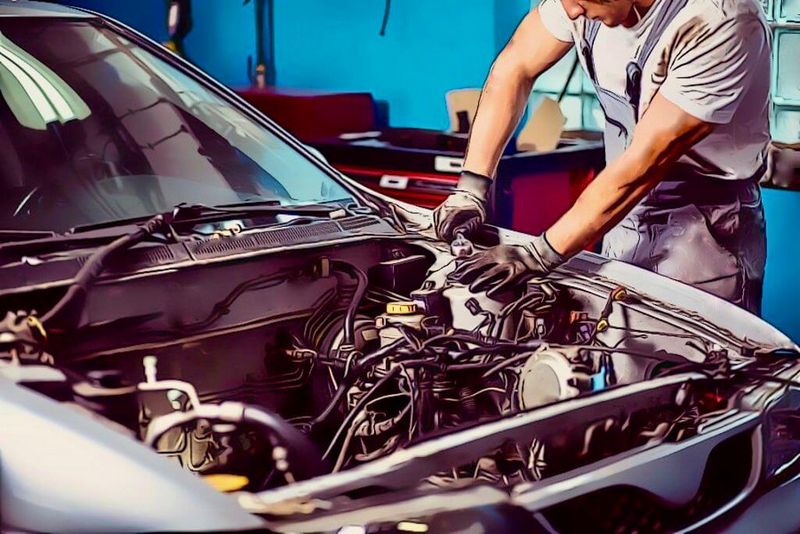
Negotiating with the Insurance Company
When the process of repairing a totaled car begins, one of the most important steps is negotiating with the insurance company. This step involves discussions and reaching an agreement on the amount of money the insurance company will pay for the repairs or the total loss of the car.
Here are some key points to remember when negotiating with the insurance company:
| 1. | Document all damages: Make sure to thoroughly document all the damages to your car, including writing down any visible dents, scratches, or other issues. Take clear photos of the car from multiple angles. |
| 2. | Obtain repair estimates: Get multiple repair estimates from trusted auto repair shops. These estimates will serve as evidence of the cost of repairing the car. |
| 3. | Know your car’s value: Research the market value of your car before negotiating. This will help you understand the fair value of your car and give you a basis for negotiation. |
| 4. | Provide evidence: Present all the documentation, including the repair estimates and photos, to the insurance company. This evidence will support your negotiation for a fair payout. |
| 5. | Be prepared to negotiate: Insurance companies often try to settle for a lower amount. Be prepared to negotiate and assertively advocate for a fair payout based on the damages and the value of your car. |
| 6. | Consider hiring a public adjuster: If you are having difficulties negotiating with the insurance company, you may want to consider hiring a public adjuster. These professionals specialize in negotiating with insurance companies on behalf of the policyholder. |
Remember, negotiating with the insurance company is a crucial step in the process of repairing a totaled car. Being well-prepared, having all the necessary documentation, and advocating for a fair payout will increase your chances of receiving the compensation you deserve.
Deciding Whether to Repair or Replace
- Cost: One of the main factors to consider is the cost of repairing versus replacing the car. If the cost of repairs is significantly higher than the value of the car, it may be more economical to replace it.
- Extent of damage: Another important consideration is the extent of the damage. If the car has suffered extensive damage to its frame or other major components, it may be difficult and expensive to repair.
- Safety: Safety should always be a top priority. If the car has been severely damaged and there is a risk that it may not be safe to drive, it is best to replace it.
- Age and mileage: The age and mileage of the car can also play a role in the decision-making process. Older cars with high mileage may not be worth investing in extensive repairs.
Ultimately, the decision of whether to repair or replace a totaled car depends on your personal circumstances and preferences. It is always a good idea to consult with a trusted mechanic or a professional in the automotive industry to get their expert opinion.
Obtaining Replacement Parts
When repairing a totaled car, one of the key steps is obtaining replacement parts. Depending on the extent of the damage, multiple parts may need to be replaced. Here are some methods for obtaining the necessary replacement parts:
- Automotive Salvage Yards: Salvage yards are a popular destination for finding used car parts. These yards often have a wide range of parts available at a fraction of the cost compared to buying new. It is important to inspect the parts for any damage before purchasing.
- Online Marketplaces: With the rise of e-commerce, there are numerous online marketplaces dedicated to selling car parts. These platforms connect buyers and sellers from all over the world, making it easier to find specific parts that may be hard to find locally.
- Local Auto Parts Stores: Many auto parts stores carry a selection of replacement parts for common car models. However, availability may be limited, and prices can vary. It’s always a good idea to call ahead to check if they have the specific parts you need.
- Dealerships: If you prefer to buy new parts or if your car is relatively new, contacting your car’s dealership is a good option. Dealerships typically have a wide selection of original equipment manufacturer (OEM) parts available, but they can be more expensive than other options.
- Specialty or Junkyards: For rare or hard-to-find parts, specialty shops or junkyards may be the best option. These places often stock unique parts that are no longer in production and can be invaluable when restoring a totaled car.
When obtaining replacement parts, it is important to ensure that they are compatible with your car’s make and model. In some cases, you may need to consult with a mechanic or refer to your car’s manual for guidance. Additionally, always inspect the parts for any damage or defects before installing them.
Repairing the Frame and Structure
When a car is totaled, it usually means that its frame and structure have been severely damaged. Repairing the frame and structure of a totaled car is a complex process that requires the expertise of a trained professional.
The first step in repairing the frame and structure is to assess the extent of the damage. The technician will carefully inspect the car and determine which parts of the frame need to be straightened or replaced. This may involve using specialized equipment such as hydraulic presses and frame alignment machines.
Once the damaged areas have been identified, the technician will begin the repair process. This typically involves straightening the frame using hydraulic tools to carefully bend the metal back into place. In some cases, damaged sections of the frame may need to be cut out and replaced with new metal.
After the frame has been straightened and repaired, the technician will then focus on the structural components of the car. This may involve replacing damaged sections of the body, reinforcing weakened areas, and ensuring that all structural components are aligned correctly.
Throughout the repair process, it is important to keep in mind that safety is the top priority. The repaired frame and structure must be strong enough to withstand future impacts and protect the occupants of the car in the event of a collision.
In conclusion, repairing the frame and structure of a totaled car requires specialized knowledge and equipment. It is a vital step in the overall process of repairing a totaled car and ensuring its safety on the road.
Fixing the Mechanical Components
When a car is totaled, it’s not just the body that gets damaged. The mechanical components of the car are also affected and need to be fixed during the repair process.
The first step in fixing the mechanical components is to assess the extent of the damage. This can be done by conducting a thorough inspection of the car, both visually and through diagnostic tests. The mechanic will look for any signs of damage or malfunction in the engine, transmission, suspension, brakes, and other important parts of the car.
Once the damage has been assessed, the mechanic will create a repair plan. This plan will outline the necessary repairs and the estimated cost and time required to fix the car. It is important to note that fixing the mechanical components of a totaled car can be a complex and time-consuming process, depending on the extent of the damage.
To fix the mechanical components, the mechanic may need to disassemble certain parts of the car. This can include removing the engine, transmission, or suspension components. During this process, it is crucial to keep track of all the removed parts and ensure they are properly labeled and stored.
After disassembling the necessary components, the damaged parts will be replaced or repaired. This includes replacing broken or damaged parts with new ones or fixing them if possible. The mechanic will also check for any other hidden damage that may have been missed during the initial assessment.
Once the repairs are complete, the mechanic will reassemble the car and conduct a final inspection. This includes checking all the repaired components to ensure they are working properly and that there are no hidden issues.
In conclusion, fixing the mechanical components of a totaled car is a crucial part of the repair process. It requires a thorough assessment of the damage, a well-planned repair plan, and the expertise of a skilled mechanic. By taking the time to properly fix the mechanical components, you can ensure that your car is safe to drive and will perform optimally.
Painting and Finishing Touches
Once the repairing process of a totaled car is complete, the next step is painting and applying finishing touches. This is an important step that helps restore the car to its original appearance.
The first task in the painting process is to prepare the damaged areas. This involves sanding down any rough edges and applying a primer to ensure a smooth and even surface for the paint. Once the primer is dry, the car is ready for the actual paint application.
The type of paint used will depend on the car’s original color and the extent of the repairs. The goal is to match the existing paint as closely as possible, so that the repaired areas blend in seamlessly with the rest of the car. This requires careful color matching and blending techniques by a skilled painter.
After the paint has been applied, a clear coat is usually added to provide a protective layer and give the paint a glossy finish. This helps protect the paint from fading, chipping, and other types of damage. The clear coat also helps to further blend the repaired areas with the rest of the car.
Once the painting is complete, the finishing touches can be added. This includes reattaching any trim, such as moldings or badges, that may have been removed during the repairing process. It may also involve applying a polish or wax to the painted surfaces to enhance their shine and protect them from environmental elements.
The painting and finishing touches stage is crucial in the process of repairing a totaled car. It not only restores the car’s appearance but also adds a layer of protection to the repaired areas. A well-executed paint job can make the difference between a car that looks like it has been repaired and one that looks like it has never been damaged.
Final Inspection and Quality Control
Once the car has completed the repairing process, it is essential to perform a final inspection to ensure that all repairs have been done correctly and the car is safe to drive. This final inspection is crucial in verifying the quality and integrity of the repairs.
During the final inspection, a skilled technician will carefully examine the car, checking for any issues that may still persist or have been overlooked during the repairing process. This inspection typically involves a thorough visual examination, as well as a test drive to assess the car’s performance and handling.
The technician will pay close attention to the repaired areas, looking for any signs of imperfections, such as misaligned panels or paint color mismatches. They will also inspect the mechanical components that were worked on, ensuring that they are functioning correctly and have been properly reassembled.
If any issues are found during the final inspection, they will be addressed by the technician, and necessary repairs or adjustments will be made. Once the car passes the final inspection and quality control, it is considered ready for the customer to pick up.
It is important to note that a reputable repair shop will prioritize the safety and satisfaction of their customers. They will ensure that all necessary repairs have been made to restore the car to its pre-accident condition and that it meets all safety standards.
By conducting a thorough final inspection and quality control, a car repair shop can provide their customers with the assurance that their vehicle has been repaired properly and is safe to drive.
Getting Back on the Road
Once the process of repairing a totaled car is complete, it’s time to get back on the road. However, before hitting the pavement, there are a few important steps to take to ensure a smooth transition.
1. Check for any remaining repairs: Before getting back on the road, make sure all the necessary repairs have been completed. This includes both the cosmetic and mechanical repairs. Take the time to thoroughly inspect the car and test all the systems to ensure everything is in proper working order.
2. Update your insurance: Contact your insurance provider and inform them about the repairs that have been done on your car. Provide them with any necessary documentation to support your claim. It’s important to make sure your insurance policy accurately reflects the current condition of your car.
3. Replace necessary documents: If any important documents, such as your registration or insurance card, were damaged in the accident, be sure to replace them before getting back on the road. You’ll need these documents readily available in case you’re pulled over or involved in another incident.
4. Test-drive the car: Before fully committing to driving the car regularly, take it for a test drive. This will help you get a feel for any changes in how the car handles and ensure there are no lingering issues that need to be addressed.
5. Drive defensively: After getting back on the road, it’s crucial to drive defensively and be extra vigilant. Accidents can happen at any time, so it’s important to be aware of your surroundings and react accordingly. Follow all traffic laws and take extra precautions to ensure your safety and the safety of others on the road.
By following these steps and staying proactive, you can get back on the road with confidence after repairing your totaled car. Remember to stay patient and take your time adjusting to the repaired vehicle. Safe travels!
Question-answer:
What does it mean for a car to be totaled?
When a car is considered totaled, it means that the cost of repairing the damages is significantly higher than the value of the car itself, making it not financially feasible.
How can I determine if my car is totaled or not?
You can determine if your car is totaled by contacting your insurance company and providing them with the details of the accident. They will assess the damages and compare it to the car’s value to make a determination.
What happens after my car is deemed totaled?
After your car is deemed totaled, your insurance company will provide you with a settlement offer. This offer is usually the actual cash value of your car minus the deductible and salvage value. You can choose to accept the offer and surrender the car, or you can negotiate with your insurance company for a higher settlement.
Can I still repair my totaled car?
Yes, you can still repair your totaled car if you choose to keep it. However, you will need to notify your insurance company and obtain a salvage title. You will also be responsible for financing the repairs on your own, as your insurance company will no longer provide coverage for the damages.
Is it worth it to repair a totaled car?
Whether it is worth it to repair a totaled car depends on several factors, including the extent of the damages, the cost of the repairs, and the value of the car. It is recommended to consult with a mechanic and get estimates for the repairs before making a decision.
